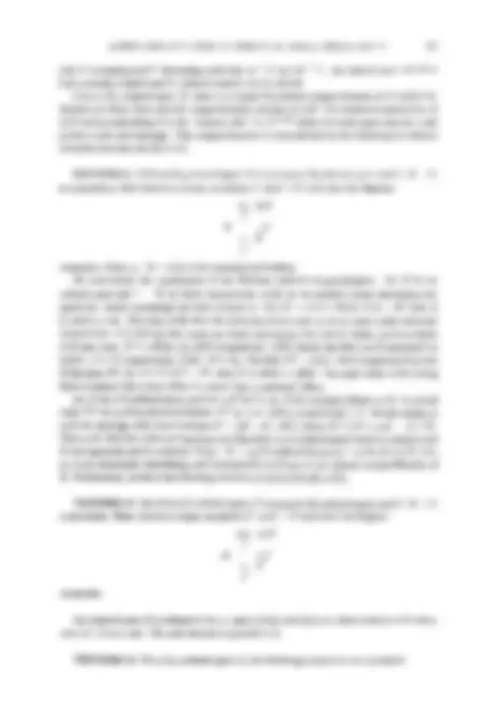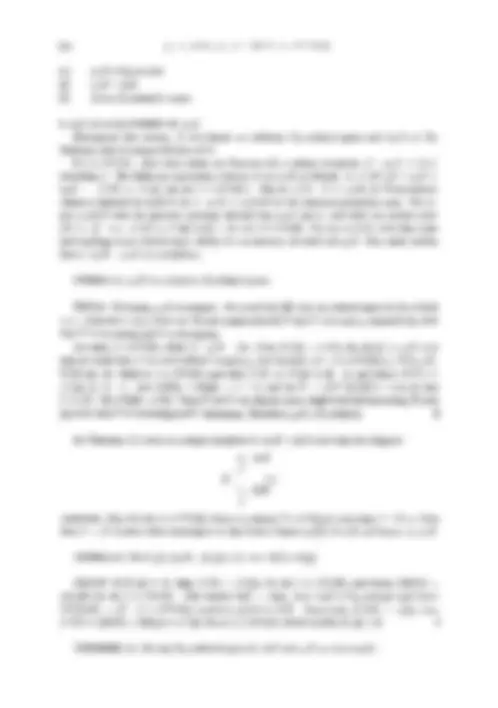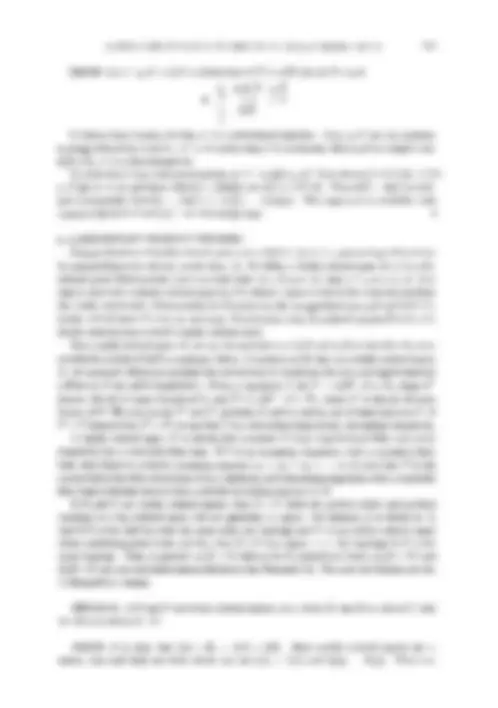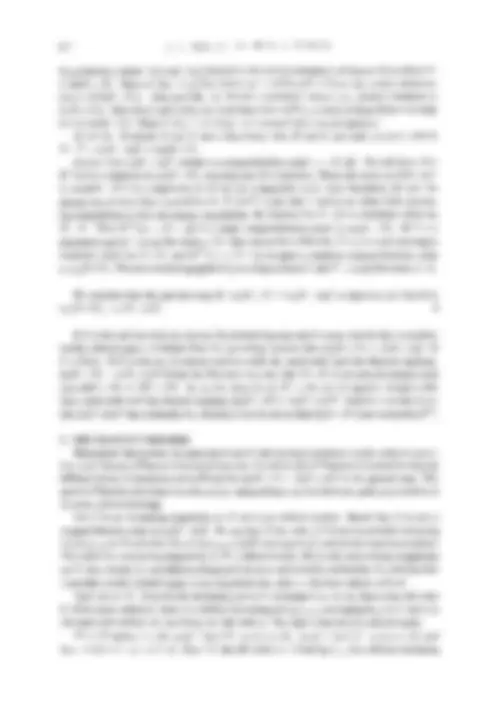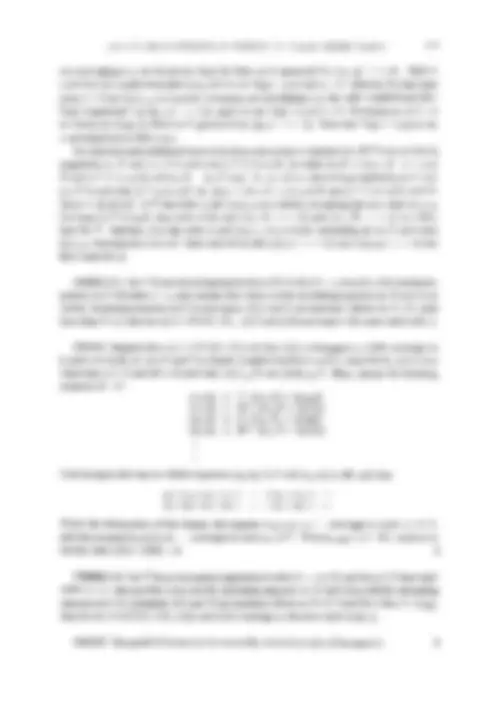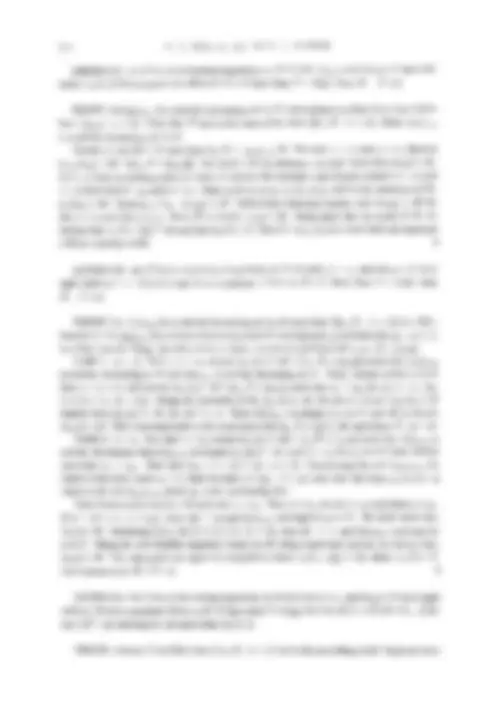Download Conditions for Ordered Product Spaces: Nachbin Compactification of Tot. Ordered Spaces and more Papers Trigonometry in PDF only on Docsity!
Internat. J. Math. & Math. Sci. VOL. 18 NO. 4 (1995) 665-
665
ON THE NACHBIN COMPACTIFICATION
OF PRODUCTS OF^ TOTALLY^ ORDERED^ SPACES
D.C. KENT, DONGMEI^ LIU
Department of Mathematics
Washington State^ University
Pullman, Washington,^ 99164-
and
T.A. RICHMOND
Department of Mathematics
Western Kentucky University
Bowling Green, Kentucky 42101
(Received October 18, 1993)
ABSTRACT. Necessary and sufficient conditions are given for (^) o(X Y) (^) oX x^ oY,^ where X and Y are totally ordered spaces and (^) oX denotes the Nachbin (or Stone-ech^ ordered) com-
pactificatio of X.
KEY WORDS AND PHRASES. Nachbin compactification, Wallman ordered^ compactification,
totally ordered space, maximal c-filter, strictly first countable space.
1980 AMS SUBJECT CLASSIFICATION CODES:^54 D^ 35,^54 F^ 05,^54 B^ 10.
1. INTRODUCTION.
If X is a T3.5-ordered space (i.e., an ordered topological space which^ is^ %ompletely^ regular
ordered" in the sense of Nachbin (^) [8]}, then X has a largest (^) T2-ordered compactification (^) oX which
is called the Nachbin (or Stone-ech ordered) compactification. This^ compactification,^ introduced
in [8], has been investigated in all of our references except [5].
We are interested in determining when (^) o(X x (^) Y} oX oY, a^ problem which has^ not
previously received^ attention^ in^ the^ literature.^ The^ methods^ used^ by^ Glicksberg^ [5] to^ solve
the corresponding problem for the Stone-(ech^ compactification do^ not^ appear^ to^ be^ fruitful^ when
applied to the Nachbin compactification. Therefore, at this preliminary stage of^ our^ investigation,
we have focused our attention on the case where X and Y are "totally ordered spaces", where
a totally ordered space is defined to be^ a^ totally^ ordered^ set^ with^ a^ convex, T2-ordered topology
(not necessarily^ the order^ topology}.^ Our^ main^ result,^ Theorem^ 5.6,^ gives^ a^ simple^ condition^ for
totally ordered spaces X and Y which is necessary and sufficient for o(X Y) (^) oX oY.
666 D. C. KENT, D. LIU AND T. A. RICHMOND
Our solution to the aforementioned problem makes^ extensive^ use^ of^ the^ Wallman^ ordered
compactification woX, introduced in [2]. In Section^3 we^ show^ that^ for^ any^ T3.-ordered space^ X,
oX can^ be^ obtained^ from^ woX via^ a^ certain^ quotient^ construction,^ and^ this^ result^ is^ employed
in the proof of our main theorem. We also make use of^ the^ fact^ that woX [oX for^ any^ totally
ordered space X.
We first prove a preliminary version of our product theorem in Section 4 under the^ assumption
that the totally ordered spaces X and Y are %trictly first countable". (A totally ordered^ space^ is
defined to be strictly first countable if every neighborhood filter and every maximal closed-convex
filter has a countable filter base.) Surprisingly, the condition which works" in the^ strictly^ first
countable case also works" in the general case (see Theorems 4.4 and 5.6). If X and Y are
strictly first^ countable, then (^) o(X x^ Y) [oX [oY and^ Wo(X Y) woX woY are^ equivalent
statements. We do not know if this equivalence holds for arbitrary totally ordered spaces X^ and^ Y.
2. PRELIMINARIES.
Let {X,_<) be aposet. Fora non-empty subset A of X, we define d(A) {y e X y <
x for some x E A} to be the decreasing hull of A; the increasing hull i(A) is defined dually.
We shall write d(x} and i(x} in place of d({x}} and i({x}}. A set A is i,creasing (respectively,
decreasing) if A i(A} (respectively, A d(A}}; a set which is either increasing or decreasing is
said to be monotone. For any A C_ X, A ^ i(A} N d(A} is called the convex hull of A, and A is
convex if A A ^.
Let F(X) denote the set of all filters on a set X. We always use the term filter o^ mean^ a
proper set filter. If .T and (^). are filters on X such that F n G (^) # ,^ for all F E Y and G C .,^ then r y^ denotes the filter generated by (^) (F N G" F e ’, G e (^) .); if, on the other hand,
contain disjoint sets, we say that
"
v (^). [ails to exist. A filter "
is ]tee if there is no point common
to all the sets in .T. A filter which is not free is said to be fixed; in particular, the symbol will
denote the fixed ultrafilter generated by x G X. For any filter Y on X, the filter
’^
generated by
sets of the form {F ^ F E .T} is called the convex hull of ’.
An ordered terpalogical space, or simply an ordered space, is a triple (X, _<, r), where (X, <) is
a poser and r a eanvex topology on (X, <_} (i.e., r is a topology which has a subbase consisting
of monotone open ets). Note that every ordered space is locally convex in the sense that every
neighborhood filter has a base of convex open sets. When there is no danger of confusion, we refer
to the ordered space (X, <, r} simply as X. If X and Y are ordered spaces, a map f X Y is
increasing (respectively, decreasing) if x < y in X implies f(x) <_ f(y) (respectively,
in Y. A continuous, increasing map is called an ordered topological morphism, or more briefly a
morphisrn. A b]jective morphism whose inverse is also a morphism is called an ordered $opological
isomorphism, or more briefly an isomorphism. Let VI’(X) (respectively, CD’(X)) denote the set
of all morphisms (respectively, continuous, decreasing maps} from an ordered space X into [0, 1].
An ordered space X is T-ordercd if i(x} and d(x} are closed sets, for all x X; X is T-ardered
if the partial order relation _< is closed in X x X. An ordered space X is T.s-ordered (completely
regular ordered in [8]) if the following conditions are satisfied: (1} If x X, A is a closed subset
of X, and x A, then there is f CI’(X) and g CD’(X) such that f(x) g(x} 0 and
f(y) v^ g(y) 1, for^ all^ y E A; (2) If x y in X, there is f CI’(X) such that /(y} 0 and
f(x) 1.^ The^ T3.-ordered spaces^ are^ precisely^ those^ which^ allow^ T-ordered compactifications
(see [3] and^ [8]}. An^ ordered^ space^ X^ is^ normally^ ordered^ (see [8]} if, whenever^ A^ and^ B^ are
disjoint closed sets, with A increasing and B decreasing, there are disjoint open sets U and V,
668 D. C. KENT, D. LIU AND T. A. RICHMOND
(I) woX is^ T-ordered
() ,,,ox^ oX
(3) X is^ a^ T4-ordered c-space.
3. /oX AS A QUOTIENT OF woX.
Throughout this section, X will^ denote^ an arbitrary Ts.s-ordered space and^ (woX,) the
Wallman ordered compactification of X.
If f E CI’(X) then there exists, by Theorem 2.2, a unique morphism f^ woX [0, 1]
extending f. We define an equivalence relation on woX as follows: {(r, ) E woX x
woX f^(’) f^(.), for^ all^ f CI’(X)}. The^ set^ {[}’]
"
6 woX} of E-equivalence
classes is^ denoted^ by woX/; let a woX woX/ be^ the^ canonical projection map. We^ en-
dow woX/ with the quotient topology derived from woX and a, and with the partial order
[Y’] 5 [.] =>^ f^() <_^ f^(.) in^ [0,1], for^ all^ f 6 CI’(X). The^ set^ woX/, with^ this^ order
and topology, is an ordered space which, for convenience, we shall call #oX. One easily verifies
that a "woX oX is a morphism.
LEMMA 3.1. (^) oX is a compact, (^) T-ordered space.
PROOF. Obviously, #oX is compact. We recall (see [8]) that an ordered space is T-ordered
whenever z y, there are disjoint neighborhoods U and V of x and y, respectively, such
that U is increasing and V is decreasing.
For each (^) f CI’(X), define (^) f’: oX [0, 1] by (^) f’([]) fA(), for all (^) [ff] 6 oX; it is
ey to verify that f’ is a well defined morphism, nd therefore (f’: f UI(X)) CI(oX).
[] [], there^ is^ f UI’(X) such^ that^ f() f() in [0, 1], d^ hence^ f’([Y]) >
f’([]) in^ [0, 1]. Let^ f’([])- f’([]) > 0, d let U (ff)-((ff([])- e/3,1]) and
V (^) (f’)-([0, ff([]) + e/3)). Then U d V e disjoint open nieghborhoods separating (^) [Y] and
[] such^ that^ U^ is^ increing^ d^ V^ decreeing.^ Therefore^ poX^ is^ Tz-ordered.
By Theorem (^) 1.2, there is a unique morphism (^) ’woX oX such that the diagram
x \ (^) oX
coutes. Also, for y (^) f CI’(X), there is a unique (^) f CI’(oX) such that (^) f f o e. Note that (^) fA (^) f o^ ,^ since thee maps agree on the dense subspace (^) (X) of woX, d hence on (^) woX.
LEMMA 3.2. For Y’, (^). woX, (^) (Y’, ) .(Y’) (.).
PROOF. (^) If (^) (.,,) ,^ then (^) f^(r) f^(Q), for all (^) f C!(X), and hence (^) f(()) /(()) for^ all^ f CI’(X). This^ implies^ eCY) (), since^ oX is^ T3.s-ordered and^ hence eI’(ZoX) {f (^) f uP(X)} separates^ points^ in^ oX. Conversely,^ if^ () (), then fA() f(@()) =/(()) fA() for^ all^ f CI’(X), which^ implies^ (, ).
THEOREM 3.3. For any (^) T3.s-ordered space X, (^) oX and (^) oX are isomorphic.
NACHBIN COMPACTIFICATION OF PRODUCTS^ OF^ TOTALLY^ ORDERED^ SPACES^669
PROOF. Let e’’#oX floX be defined by e’([’]) g’(’), for^ all^ woX.
woX -&^ #oX
x (^) / (^) % I" % ox
I follows from Lemma 3.2 tha
"
is a well-defined bijection. Since #oX h the quotient
topology induced by and
"
o is continuous, e" is continuous. Since #oX is compac and
oX is^ T,^ " is^ a^ homeomorphism. To cheek that e’ is an order-isomorphism, let (^) [Y] [] in (^) #oX. Then, for all (^) I C (^) CI’(X), () I() i^ [0, 1, a^ h^ [(()) ((5)), fo^ I cI’(X). Th^ () () i^ oX,
and consequently e’Ca(7)) e’([T]) e’([]) e’Ca()). This argument is reversible, and
consequently both e" d (e’)
are increing maps.
4. A PRELIMINARY PRODUCT THEOREM.
Compactifications of totally ordered spaces are studied in [I] and [7], and we begin this section
by summarizing some relevent results from [7]. We define a totall!/ordered space X to be a T2-
ordered space whose partial order is a total order (i.e., if z, /E X, then z <_ /or l/ _< z). It is
easy to^ show^ that^ a^ totally ordered space is a T4-ordered c-space in which the c-sets are precisely
the closed, convex sets. Consequently, by Theorem 2.3, the compactifications woX and floX of a
totally ordered space X exist and are equal. Furthermore, every T2-ordered compactification of a
totally ordered^ space is^ itself^ a^ totally ordered space.
For a totally ordered space X, we use the equivalence of (^) floX and (^) woX to describe the com-
pactification points of [3oX as maximal c-filters. It is shown in [7] that, in a totally ordered space
X, the^ maximal^ c-filters^ are precisely the convex hulls of ultrafilters; the non-convergent maximal
c-filters on X are called singularities. Given a singularity ,^ let (^) T t3{FT F (^) E 7}, where F
denotes the set of upper bounds of F, and yt^ U{Ft F C }, where F is the set of lower
bounds of ’. The convex sets and )’t partition X, and so exactly one of these sets is in 7. If
’t
"
(respectively, ’t (^) ’) we say that.^ is a decreasing (respectively, increasing) singularit!t.
A totally ordered space X is strictll first countable if every neighborhood filter and every
singularity has a countable filter base. If. is an (^) increasing singularity with a countable filter
base, then^ there^ is^ a^ strictly^ increasing sequence Zl < z < z3 < in X such^ that^ is^ the
convex hull of the filter of sections of (z); similarly, each decreasing singularity with a countable
filter base is likewise derived from a strictly decreasing sequence in X.
If X and^ Y are^ totally ordered spaces, then X x Y (with the product order and product
topology) is^ a^ T3.s-ordered space, but^ not^ generally a^ c-space. For^ instance, it is shown in [4]
that if X is the real line with the usual order and topology and Y is any totally ordered space
whose underlying poser is the real line, then X Y is a c-space the topology for Y is the
usual topology. Thus, in general, wo(X Y) fails to be Tz-ordered and hence wo(X x Y) and
[3o(X Y) are^ non-equivMent eompaetifieations (see Theorem 2.3). The next two lemmas are due
to Margaret A. Gamon.
LEMMA 4.1. If X and Y are totally ordered spaces, A a c-set in X, and B a c-set in Y, then
A B is a c-set in X Y.
PROOF. It is clear that i(A x B) i(A) x iCB). Since totally ordered spaces are c-
spaces, i(A) and d(A) are both closed, and so i(A) I(A) and d(A) D(A). Therefore,
NACHBIN COMPACTIFICATION OF PRODUCTS^ OF^ TOTALLY^ ORDERED^ SPACES^671
Finally, let (, ) (^) [((, ) + f+C)f+()) ].
It is clear that g is an increasing map from X Y into [0, 1] such that g(z, y) 1 if (z, y) E
i(S) and^ (z, y) 0 if^ (z, y) E d(T). By^ considering^ the^ possible^ cases, one^ may^ also verify^ that
for every (z, y) X Y, #(z, y) is the infimum of the constant function 1 and a finite sum of
continuous functions. Thus g CI’(X Y), as desired.
In the^ proof of^ the^ next^ theorem^ we^ will^ need^ some^ additional notation. Let^ X^ and^ Y^ be
totally ordered spaces, and consider the following diagram:
e oCXxr) #/z woCXxY)
XxY (^) / (^) a’ XxY
a (^) oXxoY ’,^ woXxwoY
where, in the^ notation of Section 2, e exxY, a ex x er, #xxr, and #x x #r are the
canonical embedding maps. Since (^) woX (^) oX and (^) woY oY, (^) oX x (^) floY woX x (^) woY is a
compact, T2-ordered space, and a’ and 9 are the unique, continuous, increasing extension maps
whose existence is guaranteed in Theorems 2.1 and 2.2.
Observe that /(X x Y) /oX x/og (respectively, wo(X x Y) woX x wog) o’
(respectively, (^) ) is an injective map.
THEOREM 4.4. If X and Y are strictly first countable, totally ordered spaces, then the
following statements are equivalent.
1) woX x^ woY wo(X x^ Y).
(2) (^) oX x (^) oY :/o(X x (^) Y).
(3) If either X or Y has an increasing (or decreasing) singularity, then the other space con-
tains no strictly decreasing (or strictly increasing) sequence.
PROOF. (^) (1) (^) = (2). For (^) totally ordered spaces X and Y, (^) IoX woX and (^) oY woY. Thus wo(X Y} (^) oX oY, and^ the latter space is (^) T2-ordered. By Theorem 2.3, (^) wo(X Y) o(X x^ Y) (^) oX x (^) Y. (2) (^) = (3). Assume^ X has an increasing singularity .q and that Y contains a strictly decreasing sequence (yn). Note that is a compactification point in (^) oX woX. If (^) (y,) converges to (^) yo
in Y, then we define "7 (,or(yo)); if (y,) fails to converge in Y, let N be the decreasing
singularity in Y which is the convex hull of the filter of sections of (,), and let 7 (.q,)/). In
either (^) case, (^) "7 is a (^) compactification point of (^) oX x (^) oY.
Next, let^ (z,) be^ a strictly increasing sequence in X obtained by choosing a denumerable,
nested filter base {G, :n E N} for . and choosing z, E ,,^ for all n 6 N, such ha z < z <
za < Then^ clely^ is^ he^ conv^ hull^ of the filer of sections of the sequence (z,).
Csider he filer ofaecfions of he sequence (z,, y,) on X x Y; le be he filer generated
by he subsequence (z,-t, y-) d he filer generated by he subsequence (,, y,). If
S {(2n-,, Y2n-1) : N} d T {(x,, y,):n N}, then S and T 6. Regdless
of whether or not (^) (y,) converges in Y, (^) a(Y) (d hence also (^) a(fa)) converges to in (^) oX x (^) oY.
Let 1 d be mimal c-filters on X x Y such that a and a. By Lena
4.3, there is g e CI*(X x Y) such that g(i(S)) 1 d g(d(T)) 0. Since g-l({1}) e 1 and
g-l({0}) 6 ,^ it follows that (^) g(l) converges to 1 d (^) g(2) converges to 0 in (^) [0, 1]. Using
Theorem 3.3, we identi &(X x Y) with the quotient space 0(X x Y); thus we regard the
672 D.^ C.^ KENT,^ D.^ LIU^ AND^ T.^ A.^ RICHMOND
-equiva|ence c|asses^ [i] and^ [.12] (defined in^ the^ second^ paragraph^ of^ Section^ 3) as^ elements
of fl0(X x Y). Since^ g^(l) # gA(2) (where gA^ CI’(wo(X x^ Y)) is^ the^ unique^ extension
of g CI’(X x^ Y)), [] and^ [] are^ distinct^ equivalence^ closes^ (i.e., distinct^ elements^ in
o(X x^ Y)). But^ a(,) and^ a()^ are^ both^ finer^ than^ a(a),^ so^ both^ of^ these^ filters^ converge
to in fl0(X x^ Y). Thus^ a’([]) a’([]), and^ consequently^ a’^ is^ not^ injective.
(3) (1). If^ neither^ X^ nor^ Y^ has^ a^ singularity,^ then^ X^ and^ Y^ are^ both^ compact,^ and^ so
X x Y woX x ToY wo(X x^ Y).
Assume that woX x ToY contains a compactification point (,). We^ will^ show^ that
-(q) is a singleton in (^) wo(X x (^) Y), implying that^ is^ injective. There^ are^ three^ possible^ ces
to consider. If is a singularity in X and a singularity in Y, then Condition^ (3) and^ the
sumption of^ strict^ first^ countability^ for^ X^ and^ Y^ imply^ that^ and^ are^ either^ both^ incre-
ing singularities or^ both^ decreeing^ singularities.^ By^ Lemma^ 4.2, x^ is^ a^ mimal^ c-filter^ on
X x Y. Thus -(q) (^) {7 x (^) } is a single compactification point in (^) wo(X x^ Y). If^ is^ a
singularity and^ r(Y) for^ some^ y^ Y,^ then^ one^ eily^ verifies^ that^7 x^9 is^ a^ non-convergent
mimal c-filter on X x Y, and -() (^) { x (^) 9} is again a^ singleton compactification point
in wo(X x Y). The same reoning applies if is a singularity in Y and x(x) for some^ x^ X.
We conclude that the quotient map (^) -’wo(X Y) woX x^ ToY is^ injective, and^ therefore
wo(X x^ Y) woX x^ woY.
If X is^ the^ real^ line^ with any convex, T2-ordered topology and^ Y is^ any strictly first^ countable,
totally ordered space, it follows from the preceding theorem that (^) /o(X x (^) Y) oX x/oY iff
Y is finite. If N is the set of natural numbers with the usual order and the discrete topology,
o(N x^ N) oN x/oN follows^ by^ Theorem^ 3.4;^ note^ that^ N^ x^ N^ is^ not^ pseudo-compact^ and thus/(N N) (^) N x^ /N. If, on^ the^ other^ hand, N^ is^ the^ set^ of^ negative^ integers^ with their usual order and the discrete (^) topology,/o(N x N (^) ) /oN x/oN. Indeed, it is easy to see that/oN x^ oN has^ cardinality^ bo, whereas^ it^ can^ be^ shown^ that/o(N x^ N^ has^ cardinality^2
5. THE PRODUCT^ THEOREM.
Throughout this section, the symbols X and Y will represent arbitrary totally ordered spaces.
Our main theorem (Theorem 5.6) establishes that Condition (3) of Theorem 4.4 (stated in slightly
different (^) terms) is necessary and sufficient (^) for/o(X x (^) Y) oX x/oY in the general case. The
proof of Theorem 5.6 is based on five rather technical lemmas, for which we need some additional
notation and terminology.
Let
"
be an increasing singularity on X and f an ordinal number. Recall that
"
is also a compactification point in (^) woX (^) IoX. We say that ,z^ has order if there is a strictly increasing net (^) (x^)^< on X such that the net (^) (^)^< in/oX converges to r, and is the least such ordinal.
The order of a decreasing singularity on X is defined dually. If is the order of any singularity
on X, then clearly is an infinite ordinal and the least ordinal of its cardinality. In a strictly first
countable, totally^ ordered^ space, every^ singularity has^ order^ w, the^ least^ infinite^ ordinal.
Next, let^ y E Y.^ If^ no^ strictly increasing net^ in Y^ converges to^ y, we^ say that^ y has^ left order
- If for some ordinal ,^ there is a strictly increasing net (y^)^< converging to y in Y and is the least such (^) ordinal, we say that y has (^) left order (^). The right order for y is defined dually.
Ifz E Y and y < z, let [y,z] {a Y "y < a <_ z}, [y,z) {a Y y <_ a < z}, and
(y,z] {a Y’y^ < a^ <^ z}. Ify Y has^ left orderp > 0 and (y^)^<p is^ a strictly increasing
674 D. C. KENT, D.^ LIU^ AND^ T.^ A.^ RICHMOND
LEMMA 5.3. Let be an increasing singularity on^ X^ of^ order^ >^ w^ and^ let^ y^ Y^ have^ left
order (^) rt :>^ 0. If is a maximal c-filter on X Y finer^ than^27 e(y), then^ .M^ .T^.
PROOF. Let (Yu),< be^ a^ strictly increasing^ net^ on^ Y^ converging^ to^ y;^ thus^ )t(Y)^ has^ a^ filter
base {[Yu,Y] # < r/}. Note that 27 has a filter base^ of^ the^ form^ {Ix^, 27) A^ < }, where^ (x^)^<
is a strictly increasing net in X.
Choose ac-set M .M such^ that^ [Xo,.7") [yo,y]
_ M.
For each A < and# < r, there^ is
(a^u,b^,) M^ N^ (Ix^, :7) [y,, y]). Let^ (a, b) M^ be^ arbitrary;^ we^ shall^ show^ that^ (a,^ y)^ M.
If b^ y there^ is^ nothing more^ to^ show,^ so^ assume^ the^ contrary,^ and^ choose^ ordinals^ p^ <^ r/^ and
r < such that b < yp and a < x,. Then^ (a, b) <^ (a, b,p) <^ (a,a, b,a), and^ so^ by^ convexity^ of^ M,
(a,b,,) M.^ Since^ y, <_^ b,.,, (a,y,,) M.^ Indeed^ this^ reasoning^ implies^ that^ (a,^ y,)^ M^ for
all < rt such that p < u. Since M is closed, (a, y) M.^ Using again the convexity^ of^ M,^ we
deduce that^ [a, 27) x^ {y} C_^ M and^ that^ [a, 27) ,v.^ Thus^ .7^ >^ ,^ and^ since^ both^ are^ maximal
c-filters, equality holds.
LEMMA 5.4. Let
"
be an increasing singularity on X of order _> w, and let^ y^ Y^ have
right order rt > w.^ If^ rt and^ is^ amaximalc-filteronX^ Y^ finer^ than^ ’x^ r(y),^ then
,= (^) x (^).
PROOF. Let (x)<e be a strictly increasing net in X such^ that^ {[x,.v) A < } is^ a^ filter
base for ’. Let (Yv),<, be a strictly decreasing net in Y converging to y such that {[y,y,] <
is a filter base for "Vr(y). Let M )[ be a closed, convex set such that M C_ [Xo, .7) [y, yo].
CASE 1. (^) rt <. If 0 <_ A < (^) rt, choose (^) (ax,b,) M N^ ([xA,.T) [y, yA]) such^ that
is strictly increasing in X and (bx)A< is strictly decreasing in^ Y.^ Next, choose^ ordinal^ p^ such
that (^) r < p < ,^ and choose (^) (aa,ba) M N (^) [xa, ) [y, yo] such^ that^ a < ap, for^ all^ A^ < r/. Let
A {A < rt "bx < ba}. Using the convexity of M, (a,,b,) M, for^ all^ A^ A^ and^ (a,,b,) M
implies that (a,,,bx) M, for all A A. Since (bx)eA converges to^ y in Y and^ M^ is^ closed,
(ap, y) M. This reasoning leads to the conclusion that Ida, ) {y} C_^ M, and^ hence^27 >:
CASE 2. < ft. For each A < r, choose (a,,b,) M^ [Xo,’) x^ [y,y,] such^ that^ (bx)A<, is
strictly decreasing; thus^ (bx)< n converges to^ y in^ Y.^ For^ each^ A^ < rt, let^ ux be^ the^ least^ ordinal
such that (^) a < (^) x. Note that (^) { A < rt} C_ {p p (^) < }. Considering the net (^) (x,)<, we observe that since each (^) # < ,^ there is some {A A < #} such^ that^ the^ term^ xa occurs times in the net (^) (x,)<,, where (^) Irtl is the cardinality of (^) r. Now choose a point (^) (a, b) M such that a (^) > (^) xa. Then a > a, for all A (^) </ such that p.
IrA- {A < rt #A}, then ]A ]r/] and (b)eA converges to y in Y. We shall show that
(a,y) M. Assuming b (^) # y, let^ h’= (^) {A A’b < b}; then^ IA’] (^) Irti and^ (b,),e,, converges^ to
y in Y. Using the now familiar argument based on M being closed^ and^ convex, we^ deduce^ that
(a, y) M.^ This^ argument^ can^ again^ be^ extended^ to^ show^ [a, F) x^ {y}^ C_^ M,^ where^ [a, F)
and consequently
"
x (^).
LEMMA 5.5. Let 27 be an increasing singularity on X of order > 0, and let y Y have right
order (^). If is amaximal c-filter on XY finer than (^) .7x’l)r(y), then for all (^) f CI(XY), f(.M)
and f(27 ) converge to the same limit in [0, 1].
PROOF. Assume
"
has filter base {[x, :7) ,X^ < } as in the preceding proof. Suppose there
NACHBIN COMPACTIFICATION OF^ PRODUCTS^ OF^ TOTALLY^ ORDERED^ SPACES^675
is (^) / CI’(X Y) and #,i _> (^) r r(y) such that (^) f( ) converges to (^) [0, I] and converges to some point n (^) [0, I] other than^.^ Snce^ # x^ ,^ t^ follows^ that^ x^ ().
We shall obtain a contradiction by constructing a mml c-filter x () such^ that, for
each L ,^ f(L) ntersects (^) every neghbhorhood of a n (^) [0, I]. It follows that (^) f() converges to (^) n (^) [0, I] and hence, by Lemma (^) 5.2, () converges to ,^ a contradiction. Let (^) {U "m (^) } be a nested neighborhood be for^ [0, I], where each^ s^ a^ closed nterval. Snce (^) y( x (^) ) converges to a and (^) f > ,^ we can find (^) < such that (^) [z, (^) > d [x,> {}^ C,^ where^ C^ {U’^ N}^ is^ a^ c-set^ in^ X^ r.^ Let^ A^ {A’p^ A^ <^ }.^ Let ()< be^ a^ strictly^ decreeing^ net^ converging^ to^ in^.^ For^ each^ A^ A,^ there^ is^ p^ <^ f such^ that (z,z) C,^ for^ all^ z^ [,]. Choose^ a^ strictly^ decreeing^ net^ () such^ that^ ,^ [,)
for all A A; then (y,) converges to y and (z,,) is a net in C. Let be the filter of
sections of the net (z,9,), and let be y mimal c-filter finer th I() O().
Since C is a (^) c-set, C and (^) hence C. Thus (^) f() converges to a (^) in (^) [0, 1]. Since each set of the form (^) [z, (^) Y> x [y, y], for < f, contains an (^) element of the net (^) (z, 9), is finer than
the c-filter Y x (y), and consequently Y x (). To complete the proof, it^ remains
to show that (^) # Y x ,^ and therefore that Y x (y). Y x ,^ then each S contains a set of the form F x {y} for some F Let S K ,^ where K h the form K {(z,y) A (^) } for some A. If a
set of the form F x {y} K for some F Y, then there is an ordinal such that
[z,> F; thus^ [z,Y) {y} K.^ Let^ be any ordinal such than < < (^) f. Then
O {(z,z) z z} {(z,z) z y,.} is a c-set in X x Y containing K, d therefore K O.
But (^) [z, z) x {y} O ,^ d so (^) [z, (^) > x {y} K.^ The sumption that Y x is hereby
contradicted, d the proof of the lena is complete.
THEOREM 5.6.^ Let^ X^ d^ Y^ be^ totally^ ordered^ spies.^ Then^ o(X^ x^ Y)^ oX^ x^ oY
the following condition^ (.) is^ satisfied:^ (*)^ either^ X^ or^ Y^ contains^ an^ increing^ (or^ decreeing)
singulity of^ order^ w,^ then^ the^ other^ space^ contains^ no^ strictly^ decreeing^ (or^ strictly^ increing)
sequence. PROOF. (^) o(X x (^) Y) (^) oX x (^) oY, the proof that (^) (2) (3) in Theorem 3.4 establishes
condition (*).
Conversely, sume (*) and consider the diagrm
wo(XxY) o(XxY)
XxY
To show (^) o(X x (^) Y) (^) oX x (^) oY, it is sumcient to show that (^) (’)-’() is a singleton for each comptification point in^ oX oY. Two ces^ must^ be^ considered. CASE 1. (^) (Y, 9), where Y d 9 e singulities on (^) X d (^) Y, rpectively. Y d e
either both increing or both decreeing, it follows by Lena 4.2 that (’)-() is a singleton.
So, without loss of generality, sume that Y is increing singulity of order f and is a
decreeing singulity of order (^). (^) f ,^ then the istence of a decreeing singulity on Y
implies the existence of a strictly decreeing sequence in Y, contrary to condition (*). Thus there
is no loss of generality in suming > w; we also sume, in view of (*), that every strictly
increing sequence on X converges in X d every strictly decreeing sequence on Y converges
in Y.
The preceding observations allow us to conclude, using Lemma 5.1, that if and are in

